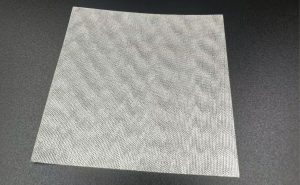ความจำเป็นในการระบายความร้อนชิปอย่างมีประสิทธิภาพ
เนื่องจากการใช้พลังงานและความหนาแน่นของการรวมชิปยังคงเพิ่มขึ้นอย่างต่อเนื่อง ความต้องการโซลูชันระบายความร้อนขั้นสูงเพื่อจัดการกับการสร้างความร้อนที่เพิ่มขึ้นจึงเพิ่มขึ้นเช่นกัน การระบายความร้อนชิปอย่างมีประสิทธิภาพเป็นสิ่งสำคัญสำหรับการรับประกันประสิทธิภาพที่เหมาะสมที่สุดและขยายอายุการใช้งานของอุปกรณ์อิเล็กทรอนิกส์ ตั้งแต่ซีพียูและจีพียูไปจนถึงส่วนประกอบเซมิคอนดักเตอร์ที่มีความหนาแน่นสูง หากไม่มีการระบายความร้อนอย่างรวดเร็วและมีประสิทธิภาพ ความร้อนสูงเกินไปอาจส่งผลต่อประสิทธิภาพของอุปกรณ์และอาจนำไปสู่ความเสียหายที่ไม่สามารถแก้ไขได้ บทความนี้จะเจาะลึกเทคโนโลยีระบายความร้อนชิปขั้นสูงและบทบาทของวัสดุอินเทอร์เฟซความร้อน (TIM) ที่เป็นโลหะ โดยเฉพาะอินเดียม ตลอดจนการใช้วัสดุโลหะผสมอุณหภูมิต่ำที่เพิ่มขึ้นในการจัดการความร้อน
1. ทำความเข้าใจเกี่ยวกับเทคโนโลยีการระบายความร้อนของชิป
เทคนิคการระบายความร้อนของชิปได้รับการพัฒนาขึ้นในช่วงหลายปีที่ผ่านมาเพื่อแก้ปัญหาความร้อนที่เพิ่มขึ้นของส่วนประกอบอิเล็กทรอนิกส์สมัยใหม่ วิธีการระบายความร้อนแบบดั้งเดิม เช่น การระบายความร้อนด้วยอากาศและการระบายความร้อนด้วยน้ำยังคงได้รับความนิยม แต่แนวทางที่สร้างสรรค์ เช่น การระบายความร้อนด้วยของเหลวและการระบายความร้อนด้วยการเปลี่ยนเฟสกำลังได้รับความนิยมมากขึ้น โดยเฉพาะในแอพพลิเคชั่นที่มีกำลังไฟสูง วิธีการเหล่านี้แม้จะมีประสิทธิภาพ แต่ก็ต้องอาศัยวัสดุอินเทอร์เฟซความร้อนเพื่อถ่ายเทความร้อนจากชิปไปยังระบบระบายความร้อนอย่างมีประสิทธิภาพ ซึ่งถือเป็นสิ่งสำคัญสำหรับการรักษาประสิทธิภาพการทำงานที่เหมาะสมที่สุด
2. วัสดุอินเทอร์เฟซทางความร้อนที่ทำจากโลหะ (TIMs)
ต่างจากวัสดุที่ทำจากโพลีเมอร์แบบดั้งเดิม เช่น จารบีระบายความร้อน TIM ที่ทำจากโลหะให้การนำความร้อนที่เหนือกว่าและประสิทธิภาพที่เพิ่มขึ้น TIM ที่ทำจากโลหะ โดยเฉพาะที่ทำจากอินเดียม ได้รับความนิยมเพิ่มมากขึ้นสำหรับการใช้งานที่มีประสิทธิภาพสูงและความน่าเชื่อถือสูง ด้วยค่าการนำความร้อนที่ 86W/mK อินเดียมจึงผสมผสานความเหนียวและการนำความร้อนได้อย่างลงตัว ทำให้เป็นตัวเลือกที่เหมาะสำหรับการใช้งานที่ต้องการโซลูชันอินเทอร์เฟซความร้อนทั้งแบบบัดกรีและแบบอัดแน่น ประสิทธิภาพที่เหนือกว่าของ TIM ที่ทำจากอินเดียมทำให้เหมาะสำหรับอุปกรณ์อิเล็กทรอนิกส์ขั้นสูงที่มีเอาต์พุตความร้อนสูง

3. TIM ที่ใช้อินเดียมเป็นฐาน: ปรับให้เหมาะสมสำหรับการกระจายความร้อน
พรีฟอร์มบัดกรีอินเดียมบริสุทธิ์หรือโลหะผสมอินเดียม มักจะมีการเคลือบฟลักซ์ ซึ่งให้โซลูชันความร้อนที่มีประสิทธิภาพสำหรับ CPU และ GPU ช่วยให้เกิดช่องว่างอากาศน้อย ประสิทธิภาพความร้อนสูง และความน่าเชื่อถือที่เป็นพิเศษ วัสดุเหล่านี้ถูกนำมาใช้กันอย่างแพร่หลายในแอพพลิเคชั่น die-to-lid สำหรับ CPU และ GPU เนื่องจากมีความเสถียรและอายุการใช้งานที่ยาวนาน ประโยชน์ที่โดดเด่นประการหนึ่งของการใช้อินเดียมบริสุทธิ์เป็น TIM ก็คือความทนทาน แม้จะผ่านรอบการจ่ายไฟเป็นเวลานาน TIM อินเดียมก็ยังคงไม่มีปัญหา เช่น การแตกร้าวหรือการอัดรีด ทำให้มีประสิทธิภาพในการระบายความร้อนที่สม่ำเสมอแม้ในสภาพแวดล้อมที่ท้าทาย
นอกจากนี้ TIM ที่ใช้อินเดียมยังมีอินเทอร์เฟซความร้อนแบบบีบอัดได้ระหว่างแหล่งความร้อนและแผ่นระบายความร้อน ซึ่งช่วยเพิ่มประสิทธิภาพการถ่ายเทความร้อนด้วยการลดความต้านทานความร้อนของอินเทอร์เฟซให้เหลือน้อยที่สุด ฟอยล์อินเดียมที่มีลวดลายช่วยเพิ่มความสามารถในการบีบอัดของ TIM และไม่จำเป็นต้องทำการรีโฟลว์ ทำให้สะดวกต่อการใช้งานในแอพพลิเคชั่นประสิทธิภาพสูงต่างๆ ฟอยล์อินเดียมที่มีความสามารถในการนำความร้อนสูงนี้ซึ่งสูงถึง 86W/mK ส่งผลให้การระบายความร้อนมีประสิทธิภาพและความเสถียรของอุปกรณ์ดีขึ้น
4. โลหะผสมอุณหภูมิต่ำ: แนวโน้มใหม่ในการจัดการความร้อน
เมื่อไม่นานมานี้ มีความสนใจเพิ่มขึ้นในวัสดุโลหะผสมอุณหภูมิต่ำในอุตสาหกรรมอิเล็กทรอนิกส์ โดยเฉพาะอย่างยิ่งสำหรับการใช้งานที่ทำงานต่ำกว่าอุณหภูมิการรีโฟลว์มาตรฐาน SAC305 โลหะผสมอุณหภูมิต่ำเหล่านี้ถูกนำมาใช้ในการประกอบแผงวงจรพิมพ์ (PCB) มากขึ้นเพื่อลดการบิดเบี้ยวของส่วนประกอบ ลดการใช้พลังงาน และเปิดใช้งานการบัดกรีแบบขั้นตอนในกระบวนการรีโฟลว์หลายขั้นตอน
แนวโน้มดังกล่าวเป็นแรงผลักดันให้เกิดความสนใจในการใช้โลหะผสมอุณหภูมิต่ำสำหรับการเชื่อมต่อระดับแรกในบรรจุภัณฑ์เซมิคอนดักเตอร์ เช่น ในไมโครบัมพ์หรือการใช้งานเสาทองแดง ด้วยการอนุญาตให้มีอุณหภูมิการรีโฟลว์ที่ต่ำกว่า โลหะผสมเหล่านี้จึงช่วยปกป้องชิ้นส่วนที่มีความอ่อนไหว ทำให้เป็นส่วนเสริมที่มีคุณค่าสำหรับกลยุทธ์การจัดการความร้อนสมัยใหม่
บทสรุป: อนาคตของการระบายความร้อนของชิปและวัสดุอินเทอร์เฟซทางความร้อน
เนื่องจากความต้องการอุปกรณ์อิเล็กทรอนิกส์ที่มีประสิทธิภาพและบูรณาการกันยังคงเพิ่มขึ้นอย่างต่อเนื่อง ความต้องการโซลูชันการจัดการความร้อนที่มีประสิทธิภาพจึงเพิ่มขึ้นเช่นกัน วิธีการระบายความร้อนขั้นสูง เช่น การระบายความร้อนด้วยของเหลวและการเปลี่ยนเฟส นำเสนอแนวทางใหม่ในการจัดการความร้อน แต่บทบาทของวัสดุอินเทอร์เฟซความร้อนยังคงมีความสำคัญ TIM ที่ใช้อินเดียมซึ่งมีความสามารถในการนำความร้อนสูงและความทนทาน ถือเป็นตัวเลือกที่เหมาะสำหรับการใช้งานที่มีประสิทธิภาพสูง ช่วยให้มั่นใจได้ว่าการระบายความร้อนจะเสถียรและยาวนาน ในทำนองเดียวกัน โลหะผสมอุณหภูมิต่ำกำลังก้าวขึ้นมาเป็นตัวเลือกที่มีประสิทธิภาพในการลดความเครียดจากความร้อนและเพิ่มประสิทธิภาพการใช้พลังงานในการประกอบ PCB และการบรรจุเซมิคอนดักเตอร์ ความก้าวหน้าในเทคโนโลยีการระบายความร้อนของชิปเหล่านี้ร่วมกันสัญญาว่าจะช่วยเพิ่มเสถียรภาพ ความน่าเชื่อถือ และอายุการใช้งานของอุปกรณ์อิเล็กทรอนิกส์รุ่นต่อไป
